Mythical creatures and creatures of Hindu mythology have always fascinated people with their captivating stories and incredible abilities. From gods and goddesses to divine animals and legendary monsters, Hindu mythology is filled with a diverse array of characters that embody the rich cultural and spiritual traditions of India. These mythical beings and creatures have captured the imagination of people for centuries and continue to be celebrated in various forms of art, literature, and religious ceremonies. In this article, we will explore the fascinating world of Hindu mythology, diving into the deities, legendary creatures, magical artifacts, and the significance of these mythical beings in the religious and cultural context. Join us on this enchanting journey as we unravel the captivating tales of mystical creatures that have shaped the Hindu mythological landscape.
Contents
- Deities and Divine Beings
- Legendary Creatures
- Magical Artifacts and Symbols
- Significance of Mythical Creatures
- Modern Interpretations
- Conclusion
-
Frequently Asked Questions
- 1. Who are the Trimurti in Hindu mythology?
- 2. What are some popular goddesses in Hindu mythology?
- 3. Are there any half-human, half-god beings in Hindu mythology?
- 4. What are some divine animals in Hindu mythology?
- 5. Are there any celestial beings in Hindu mythology?
- 6. What are some famous mythical monsters in Hindu mythology?
- 7. What are some magical artifacts mentioned in Hindu mythology?
- 8. What is the significance of mythical creatures in Hindu mythology?
- 9. How are mythical creatures depicted in Hindu art and sculptures?
- 10. Are there modern interpretations of Hindu mythical creatures?
- References
-
Frequently Asked Questions
- 1. What are the most well-known gods and goddesses in Hindu mythology?
- 2. Who are the demigods and demons in Hindu mythology?
- 3. What are some examples of celestial beings in Hindu mythology?
- 4. Which divine animals are prominent in Hindu mythology?
- 5. Are there any famous mythical monsters in Hindu mythology?
- 6. What are some magical artifacts and symbols in Hindu mythology?
- 7. What is the significance of mythical creatures in Hindu mythology?
- 8. How have mythical creatures from Hindu mythology been interpreted in modern culture?
- 9. Are there any specific rituals or festivals associated with mythical creatures in Hindu mythology?
- 10. Can mythical creatures from Hindu mythology be found in other mythologies around the world?
- References
- Read More
Deities and Divine Beings
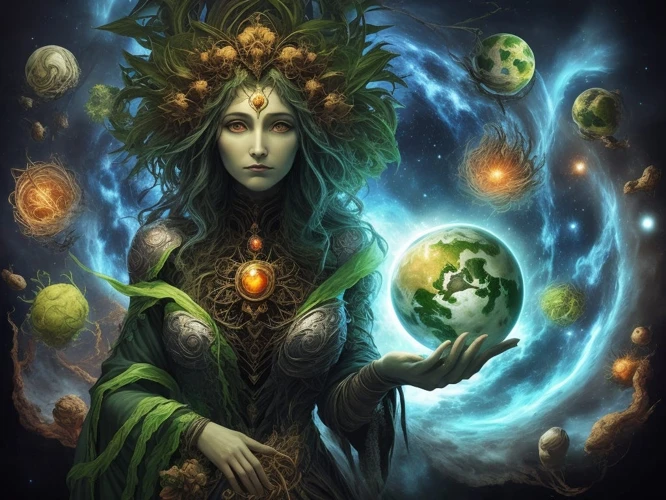
In Hindu mythology, the pantheon of deities and divine beings is vast and diverse, embodying various aspects of the cosmic order. These powerful entities, known as devas and devis, are worshipped as the supreme beings and play a central role in Hindu religious practices and rituals. The Hindu pantheon includes major gods and goddesses such as Brahma, the creator of the universe, Vishnu, the preserver of the world, and Shiva, the destroyer of evil. Each deity represents different qualities and powers, and often has a unique set of symbols and attributes associated with them. For example, Vishnu is usually depicted with his four arms holding a conch shell, a discus, a mace, and a lotus flower, symbolizing his role as the protector of the universe. Devi, the divine feminine, is also widely revered in Hindu mythology and is associated with different forms, such as Durga, Lakshmi, and Saraswati, each representing different aspects of beauty, wealth, and knowledge. These deities and divine beings are not only worshipped as gods, but they also serve as moral guides and sources of inspiration, encouraging devotees to lead virtuous lives. The stories and legends surrounding these divine beings are passed down through generations, showcasing their power and influence in Hindu culture. As we delve deeper into the world of Hindu mythology, we will further explore the fascinating stories and attributes of these deities and divine beings that continue to captivate millions around the world.
1. Gods and Goddesses
The gods and goddesses in Hindu mythology hold immense significance and are revered as celestial beings with extraordinary powers. They play an essential role in maintaining the cosmic order and guiding humanity on the path of righteousness. Each deity represents different aspects of life, embodying virtues and characteristics that devotees seek to cultivate. Brahma, the creator of the universe, is depicted with four heads symbolizing the four Vedas, the sacred Hindu scriptures. Vishnu, the preserver and protector, is often depicted with blue skin and holds various weapons and objects that represent his divine power. Shiva, the destroyer of evil, is known for his fierce and benevolent forms, such as Nataraja, the cosmic dancer. Goddesses like Durga, Lakshmi, and Saraswati represent strength, prosperity, and knowledge respectively. Durga, known for her supreme strength, rides a lion and wields multiple weapons to vanquish demons. Lakshmi, the goddess of wealth and prosperity, is depicted in a golden hue and showers blessings upon her devotees. Saraswati, the goddess of knowledge and arts, is portrayed playing the veena and is associated with learning and creativity. These gods and goddesses are not only worshipped in temples but are also celebrated in various festivals and rituals across India. The rich mythology surrounding these deities serves as a source of inspiration and deepens the spiritual connection between devotees and the divine. The stories of their exploits, battles, and divine interventions serve as moral lessons and inspire devotees to lead virtuous lives. The gods and goddesses of Hindu mythology continue to be revered and worshipped by millions, their tales resonating across generations and cultures.
Link to relevant topic: History and Origin of Ophiuchus, the 13th Zodiac Sign
2. Demigods and Demons
2. Demigods and Demons:
Demigods and demons hold a prominent place in Hindu mythology, serving as essential characters in the epic tales and religious narratives. Demigods, known as devas, are celestial beings with powers and attributes that transcend those of mortal humans but are not as supreme as the major gods. They often assist the gods in their cosmic duties and protect the universe from evil forces. Examples of demigods include Indra, the king of the gods, Agni, the god of fire, and Varuna, the god of water. These demigods possess unique abilities and play significant roles in various mythological stories.
On the other hand, demons, known as asuras or rakshasas, are antagonistic forces in Hindu mythology. They are often depicted as powerful and malevolent beings who seek to disrupt the cosmic order and challenge the authority of the gods. Despite their dark nature, demons are not simply evil entities but complex characters with their motivations and desires. Some well-known demons in Hindu mythology include Ravana, the ten-headed king of Lanka in the epic Ramayana, and Mahishasura, a shape-shifting buffalo demon who was ultimately defeated by the goddess Durga.
The stories of demigods and demons often interweave with those of the major gods and goddesses, creating intricate narratives filled with conflicts, alliances, and cosmic battles. These tales explore the eternal struggle between good and evil, highlighting the triumph of righteousness and the consequences of arrogance and greed. Demigods and demons represent different aspects of human behavior and emotions, making them relatable characters that reflect the complexities of life.
Interestingly, in Hindu mythology, the line between demigods and demons can sometimes blur, as some characters possess traits of both. This further adds layers of intrigue and depth to the narratives. The stories of demigods and demons continue to captivate audiences through literature, art, and religious performances, conveying profound moral and philosophical lessons along the way.
The realm of demigods and demons in Hindu mythology is a fascinating domain that showcases the diverse range of characters and intricacies within this rich mythological tradition. The presence of these supernatural beings brings depth and complexity to the narratives, while also serving as embodiments of various human qualities and struggles. Exploring the stories and roles of demigods and demons provides us with a deeper understanding of the universal themes depicted in Hindu mythology.
Legendary Creatures
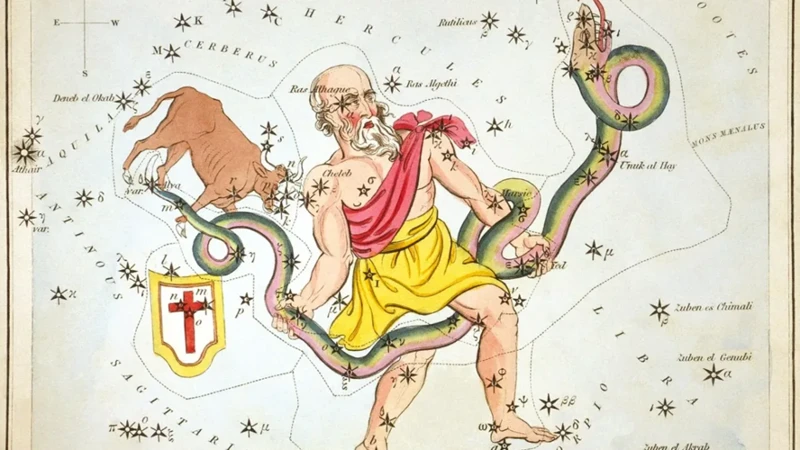
The world of Hindu mythology is replete with a diverse array of legendary creatures that have captured the imaginations of people throughout history. These mythical beings possess extraordinary abilities and often serve as companions, protectors, or adversaries to the gods and goddesses. From celestial beings to divine animals and mythical monsters, Hindu mythology presents a rich tapestry of legendary creatures that add depth and intrigue to its cosmology. Some of these creatures include the Garuda, a giant bird-like creature and the mount of Lord Vishnu, the Naga, serpent-like beings who are believed to possess immense power, and the Vanara, a race of monkey-like creatures known for their heroic deeds in the epic Ramayana. These creatures play significant roles in the mythological narratives, embodying various virtues and vices and serving as symbolic representations of different aspects of the human experience. As we explore the fascinating realm of legendary creatures in Hindu mythology, we will delve into their origins, unique characteristics, and the captivating stories that surround them, shedding light on the vibrant and enchanting world of Hindu folklore.
1. Celestial Beings
Celestial beings hold a prominent place in Hindu mythology, representing divine entities that reside in the celestial realms and possess extraordinary powers. These beings are revered for their celestial origins and are often depicted as majestic and awe-inspiring. One of the most revered celestial beings in Hindu mythology is the Surya Deva, the Sun God. As per Hindu beliefs, Surya Deva is considered the source of life and energy, and worshiped as the giver of light and warmth. He is depicted riding a chariot drawn by seven horses and holds a lotus and a sun discus. Another notable celestial being is Indra, the king of the gods and the ruler of heaven. Indra is associated with rain and thunderstorms, and is often depicted riding a flying elephant named Airavata, wielding a lightning bolt as his weapon. Similarly, Varuna, the god of oceans and water, is also revered as a celestial being. He is regarded as the guardian of cosmic order and righteousness. Varuna is often depicted with four arms holding a noose, a conch shell, a lotus, and a discus. Other celestial beings include the Navagrahas, the nine celestial deities representing the planets of our solar system. These deities are believed to have a direct influence on human life and destiny. The Navagrahas include Surya (Sun), Chandra (Moon), Mangala (Mars), Budha (Mercury), Brihaspati (Jupiter), Shukra (Venus), Shani (Saturn), Rahu (the ascending lunar node), and Ketu (the descending lunar node). Each of these celestial beings holds a significant role in Hindu mythology and has unique attributes and stories associated with them. As we explore further into the realm of Hindu mythology, we will uncover more intriguing tales and characteristics of these celestial beings that continue to captivate the imagination and devotion of millions.
2. Divine Animals
In Hindu mythology, Divine Animals hold a significant place, revered for their unique qualities and abilities. These animals often have divine associations and play integral roles in various mythological tales. One notable divine animal is Hanuman, the monkey deity known for his unwavering loyalty and immense strength. Hanuman is considered to be an embodiment of devotion and is revered as a symbol of courage and wisdom. Another revered divine animal is Nandi, the sacred bull and mount of Lord Shiva. Nandi is worshipped as a symbol of fertility, strength, and righteousness. In addition to Nandi, Ganesha, the elephant-headed deity, is also highly worshiped and regarded as the remover of obstacles. His elephant head represents wisdom, strength, and prosperity. The Hamsa (Swan) is another revered divine animal in Hindu mythology. It is often associated with the divine goddess Saraswati and symbolizes grace, purity, and knowledge. The Garuda, a half-bird and half-human creature, serves as the mount of Lord Vishnu and is known for its speed and soaring abilities. Garuda is revered as the embodiment of loyalty, courage, and power. These divine animals are not only revered in mythology but are also depicted in various forms of artwork, sculptures, and literature, depicting their importance and influence in Hindu culture and spirituality.
Please note that there are no relevant anchors in this specific text.
3. Mythical Monsters
Mythical monsters hold a significant place in Hindu mythology, adding an element of intrigue and adventure to the stories. These creatures are often depicted as otherworldly beings, possessing extraordinary powers and often serving as obstacles for the gods and heroes to overcome. One prominent example is the Rakshasas, demonic beings known for their malevolence and shape-shifting abilities. They are renowned for their ferocity and are often depicted as fearsome giants with sharp fangs and claws. Another formidable creature is the Asura, a group of power-seeking deities known for their strength and opposition to the gods. Asuras are often portrayed as half-human and half-animal, such as the buffalo-headed Mahishasura, who was eventually defeated by the goddess Durga. In addition to Rakshasas and Asuras, there are various other monstrous beings in Hindu mythology. The Nagas, serpent-like creatures, are both revered and feared for their supernatural powers and association with water bodies. The mythical bird Garuda, known for its immense size and strength, serves as the mount of Lord Vishnu, symbolizing his power over all creatures. The Vanaras, a race of monkey-like beings, are revered for their loyalty and bravery, exemplified by their prominent role in the epic tale of Ramayana. These mythical monsters not only add excitement to Hindu mythology but also symbolize various aspects of human nature and serve as metaphors for the challenges and obstacles encountered in life. By understanding and appreciating these mythical creatures, we gain a deeper insight into the complex and multifaceted world of Hindu mythology.
Magical Artifacts and Symbols
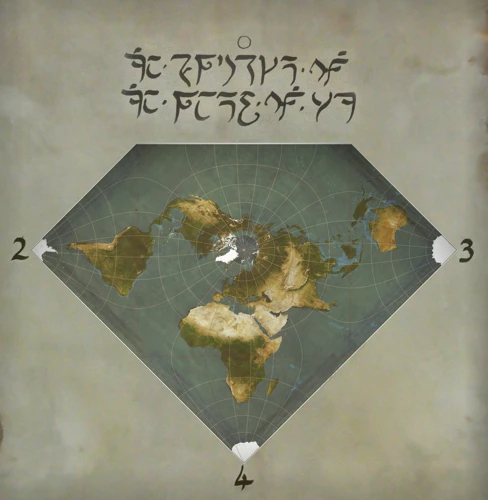
– Trishula (Trident): The trishula is a three-pronged weapon commonly associated with Lord Shiva. It symbolizes the three aspects of existence – creation, preservation, and destruction. The trident represents Lord Shiva’s power to maintain balance in the universe by creating, sustaining, and eventually dissolving it.
– Sudarshan Chakra (Discus): The Sudarshan Chakra is a powerful weapon associated with Lord Vishnu, the preserver of the universe. It is a spinning disc-like weapon that represents the cycle of time and cosmic order. The discus is believed to have the ability to destroy evil and protect righteousness.
– Vajra (Thunderbolt): The vajra is a sacred weapon often associated with the god Indra, the king of the gods. It is a symbol of strength and indestructibility, capable of defeating and subduing enemies. The vajra also represents the unbreakable bond between heaven and earth.
– Shankha (Conch Shell): The conch shell is a symbol of the divine sound in Hindu mythology. It is often associated with Lord Vishnu, who is depicted holding a conch shell known as ‘Panchajanya’. The sacred sound produced by the conch symbolizes the cosmic vibration that pervades the universe.
– Astra (Celestial Weapon): Astras are celestial weapons with immense power and are often granted by gods to mortal heroes. These weapons have different effects and are invoked through specific mantras or rituals. Examples include the Brahmastra, a weapon associated with Lord Brahma, and the Narayanastra, a weapon associated with Lord Vishnu.
– Om (Aum) Symbol: The Om symbol is a sacred sound and spiritual icon in Hinduism. It represents the ultimate reality, including the three major Hindu deities – Brahma, Vishnu, and Shiva. The symbol is often chanted during prayers and meditation, signifying the divine and interconnected nature of all existence.
– Swastika: The swastika is an ancient symbol that holds great significance in Hindu mythology. It represents well-being, good luck, and auspiciousness. The swastika is often used in religious ceremonies, as well as in architecture and art. It is important to note that the swastika symbol in Hinduism has a different meaning and cultural context than its association with hate and oppression in recent history.
– Lotus Flower: The lotus flower is an important symbol in Hindu mythology, representing purity, enlightenment, and spiritual growth. It is often associated with deities like Brahma, Saraswati, and Lakshmi. The lotus flower’s ability to rise above muddy waters and bloom beautifully symbolizes the journey of the soul towards enlightenment and liberation.
These magical artifacts and symbols of Hindu mythology are not only powerful representations of divine energy and cosmic forces but also serve as reminders of the complex beliefs and values embraced by the Hindu culture throughout history.
Significance of Mythical Creatures
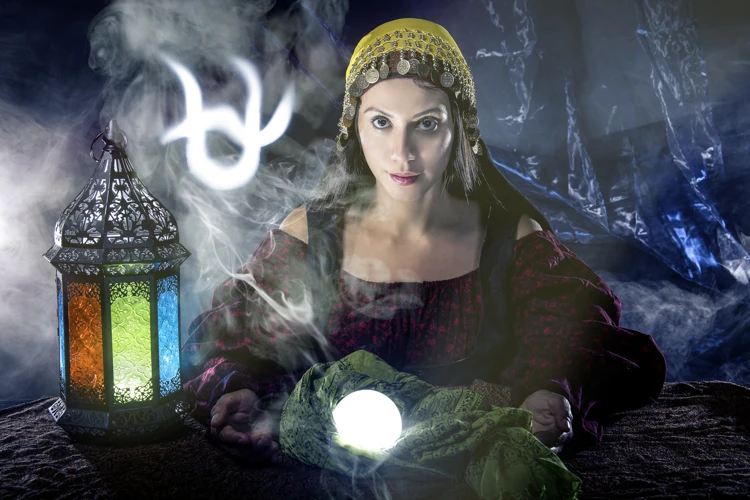
The mythical creatures of Hindu mythology hold significant cultural, religious, and symbolic importance. They serve as powerful metaphors and embodiments of various qualities and aspects of life.
1. Symbolism: Mythical creatures often represent different virtues, values, and emotions. For example, the Garuda, a half-man and half-eagle creature, symbolizes power, strength, and loyalty. The elephant-headed deity, Ganesha, represents wisdom, intellect, and the removal of obstacles. These creatures act as visual and symbolic representations, effectively encapsulating abstract concepts and making them more relatable and tangible.
2. Morality and Life Lessons: Many mythical creatures in Hindu mythology are featured in stories that convey moral teachings and life lessons. The story of Hanuman, the monkey warrior god, exemplifies devotion, loyalty, and selflessness. Hanuman’s unwavering dedication to Lord Rama demonstrates the importance of faith and service, inspiring individuals to follow a virtuous path.
3. Cosmic Order and Balance: Hindu mythology often portrays mythical creatures as guardians of the cosmic order and protectors against evil forces. The depiction of the Naga, a divine serpent creature, signifies the balance between creation and destruction, life and death. The Naga is associated with fertility, wisdom, and protection, representing the cosmic forces that govern the universe.
4. Connection to Nature and Elements: Mythical creatures in Hindu mythology are deeply rooted in nature and often associated with specific elements. The Kurma, a giant turtle, holds the earth on its back, symbolizing stability and balance within the natural world. The importance of respecting and nurturing the environment is highlighted through these creatures, encouraging a harmonious relationship with nature.
5. Inspiration for Art, Literature, and Culture: The mythical creatures of Hindu mythology have inspired countless works of art, literature, and cultural practices. Their intricate depictions can be seen in ancient sculptures, paintings, and temple carvings. They are also depicted in various forms of Indian dance, such as Bharatanatyam, Kathakali, and Odissi, adding a touch of grace and mysticism to the performances.
The significance of these mythical creatures extends beyond mythology into various aspects of life, spirituality, and cultural identity. They embody powerful archetypes, providing valuable lessons, and inspiring individuals to cultivate virtues and strive for personal growth. These captivating creatures continue to fascinate and enchant devotees and enthusiasts of Hindu mythology to this day.
Modern Interpretations
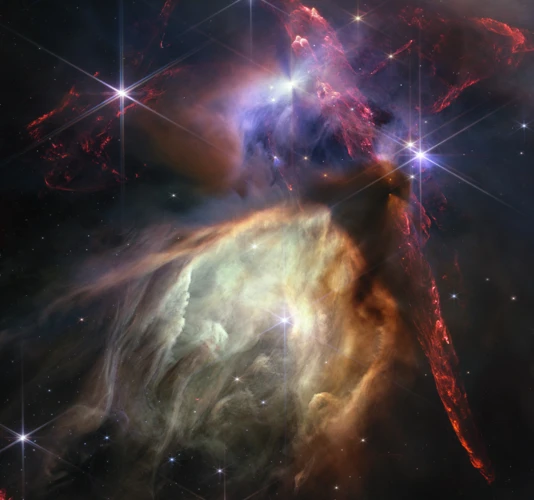
In modern times, the vibrant characters and mythical creatures of Hindu mythology continue to find new interpretations and adaptations in various forms of art, literature, and popular culture. These reinterpretations serve as a way to connect with the ancient myths and make them relevant in contemporary society. One area where this is evident is in literature, where authors draw inspiration from Hindu mythology to create compelling stories that blend the old with the new. For example, renowned author Amish Tripathi’s “The Immortals of Meluha” reimagines the life of Lord Shiva in a fictional world, combining elements of mythology with a modern narrative. Similarly, in the world of cinema, films like “Baahubali” showcase epic tales inspired by Hindu mythology, featuring larger-than-life characters and breathtaking visual effects. Another realm where modern interpretations shine is in the world of art and design. Artists incorporate the symbolism and imagery of Hindu mythology into their creations, whether it’s through paintings, sculptures, or graphic designs. This fusion of ancient mythology with contemporary aesthetics creates visually stunning and thought-provoking pieces that captivate audiences. Hindu mythology has also found its place in popular culture, with references to gods, goddesses, and mythical creatures appearing in video games, comic books, and television shows. These modern interpretations not only introduce Hindu mythology to a wider audience but also keep the stories and characters alive, breathing new life into the ancient tales. As society continues to evolve, the timeless allure and multifaceted nature of Hindu mythology ensure that it remains a source of inspiration and fascination for generations to come.
Conclusion
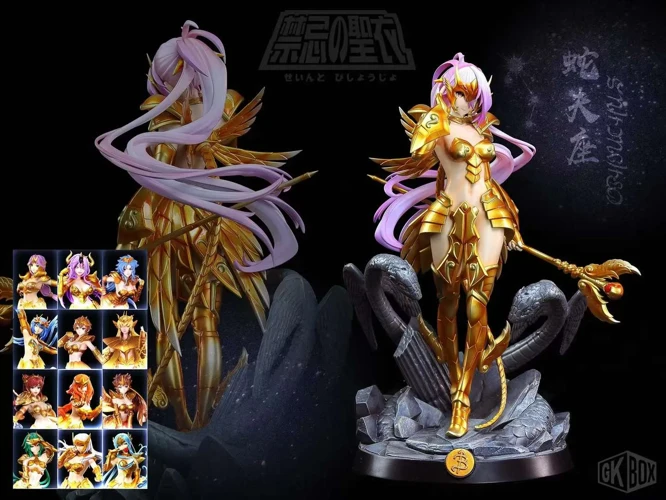
In conclusion, the world of Hindu mythology is a tapestry woven with captivating tales of powerful deities, legendary creatures, and magical artifacts. These mythical beings and creatures hold immense significance in Hindu culture, representing various aspects of spirituality, morality, and cosmic order. The rich diversity of gods and goddesses, alongside the fascinating stories of demigods, divine animals, and mythical monsters, offer a glimpse into the vastness and complexity of Hindu mythology. The symbolism and attributes associated with these beings have influenced various aspects of Indian society, from religious practices and rituals to art, literature, and even the moral values upheld by individuals. The mythical creatures and creatures of Hindu mythology continue to inspire and captivate people today, as they provide a deep connection to ancient traditions and offer valuable lessons through their stories. Whether it is the divine power of gods and goddesses, the awe-inspiring beauty of celestial beings, or the symbolism embodied in magical artifacts and symbols, Hindu mythology transports us to a world where imagination and spirituality intertwine. Exploring these mythical creatures through their legends and symbolism allows us to delve into the intricate depths of Hindu culture, where reverence for these divine beings has remained strong for centuries. By understanding and appreciating these mythical creatures, we gain insight into the enduring cultural importance of Hindu mythology, and how it continues to shape the religious, artistic, and philosophical landscape of India and beyond.
Frequently Asked Questions

1. Who are the Trimurti in Hindu mythology?
The Trimurti in Hindu mythology refers to the three major gods who are responsible for the creation, preservation, and destruction of the universe. They are Brahma, the creator; Vishnu, the preserver; and Shiva, the destroyer.
2. What are some popular goddesses in Hindu mythology?
Some popular goddesses in Hindu mythology include Durga, the fierce warrior goddess; Lakshmi, the goddess of wealth and prosperity; and Saraswati, the goddess of knowledge and arts.
3. Are there any half-human, half-god beings in Hindu mythology?
Yes, there are several demigods in Hindu mythology who are half-human and half-god. Examples include Hanuman, the monkey god, and Garuda, the bird-like creature and mount of Lord Vishnu.
4. What are some divine animals in Hindu mythology?
Some divine animals in Hindu mythology include Nandi, Lord Shiva’s bull; Vishnu’s mount, Garuda; and Yama’s mount, the buffalo-demon Mahisha.
5. Are there any celestial beings in Hindu mythology?
Yes, Hindu mythology is replete with celestial beings known as Devas. They are divine and heavenly beings who possess great power and assist the gods in their tasks.
6. What are some famous mythical monsters in Hindu mythology?
Hindu mythology features a variety of mythical monsters, such as Rakshasas, powerful demons who oppose the gods, and Nagas, half-human, half-serpent beings associated with water and fertility.
7. What are some magical artifacts mentioned in Hindu mythology?
There are various magical artifacts in Hindu mythology, including Sudarshan Chakra, Lord Vishnu’s spinning discus; Trishula, Lord Shiva’s trident; and Vajra, Indra’s indestructible thunderbolt.
8. What is the significance of mythical creatures in Hindu mythology?
Mythical creatures hold great significance in Hindu mythology as they represent the interconnectedness of the natural and supernatural worlds. They also serve as symbols of various virtues, qualities, and cosmic forces.
9. How are mythical creatures depicted in Hindu art and sculptures?
Mythical creatures are frequently depicted in Hindu art and sculptures, showcasing their distinctive attributes and symbolism. These depictions not only highlight the artistic skills of the artisans but also serve as means of storytelling and religious devotion.
10. Are there modern interpretations of Hindu mythical creatures?
Absolutely! Hindu mythical creatures continue to inspire modern interpretations in various art forms, literature, movies, and video games. These reinterpretations help keep the rich mythological traditions alive and relevant in contemporary society.
References
- 25 Lesser known mythical creatures from Hindu Mythology
- Wow! Indian mythology has some amazing mythical …
- List of legendary creatures in Hindu mythology
Frequently Asked Questions

1. What are the most well-known gods and goddesses in Hindu mythology?
The most well-known gods and goddesses in Hindu mythology include Brahma, Vishnu, Shiva, Lakshmi, Saraswati, Durga, and Kali. Each deity represents different aspects of life, such as creation, preservation, destruction, wealth, knowledge, and power.
2. Who are the demigods and demons in Hindu mythology?
The demigods, also known as Devas, are celestial beings with great power and are often portrayed as helpers or messengers of the gods. On the other hand, demons, known as Asuras, are powerful beings who oppose the gods and often represent negative qualities and forces.
3. What are some examples of celestial beings in Hindu mythology?
Some examples of celestial beings in Hindu mythology are Gandharvas (celestial musicians), Apsaras (celestial dancers), and Nagas (serpent deities). These beings are often associated with beauty, grace, and heavenly realms.
4. Which divine animals are prominent in Hindu mythology?
Several divine animals hold significant importance in Hindu mythology, such as the Nandi bull, the divine vehicle of Lord Shiva, and Garuda, the legendary bird and vehicle of Lord Vishnu. These animals symbolize power, loyalty, and protection.
5. Are there any famous mythical monsters in Hindu mythology?
Yes, Hindu mythology includes various mythical monsters. One such example is Rakshasas, demonic creatures known for their strength and ability to shape-shift. Another prominent monster is the Asura named Mahishasura, who took the form of a buffalo.
6. What are some magical artifacts and symbols in Hindu mythology?
Hindu mythology features numerous magical artifacts and symbols. One of the most well-known is the Sudarshana Chakra, Lord Vishnu’s weapon. The Trishula, a trident, is associated with Lord Shiva, and the Lotus flower symbolizes beauty and spiritual enlightenment.
7. What is the significance of mythical creatures in Hindu mythology?
Mythical creatures in Hindu mythology often have symbolic meanings and represent various aspects of human life and spirituality. They can serve as reminders of the power and diversity of the divine world and teach moral lessons through their stories.
8. How have mythical creatures from Hindu mythology been interpreted in modern culture?
Mythical creatures from Hindu mythology have found their way into modern literature, art, and popular culture. They have been featured in movies, video games, and even comic books, helping to keep the rich mythological heritage alive and accessible to a wider audience.
9. Are there any specific rituals or festivals associated with mythical creatures in Hindu mythology?
Yes, there are several rituals and festivals associated with mythical creatures in Hindu mythology. For example, the festival of Nag Panchami is dedicated to worshiping Nagas, the serpent deities. During this festival, people offer prayers and blessings to snakes.
10. Can mythical creatures from Hindu mythology be found in other mythologies around the world?
While there may be similarities or common themes among various mythologies, the specific mythical creatures in Hindu mythology are distinct to the Hindu religious and cultural tradition. However, some mythological creatures may share conceptual similarities with creatures found in other mythologies.
References
- List of legendary creatures in Hindu mythology
- Wow! Indian mythology has some amazing mythical …
- 25 Lesser known mythical creatures from Hindu Mythology







